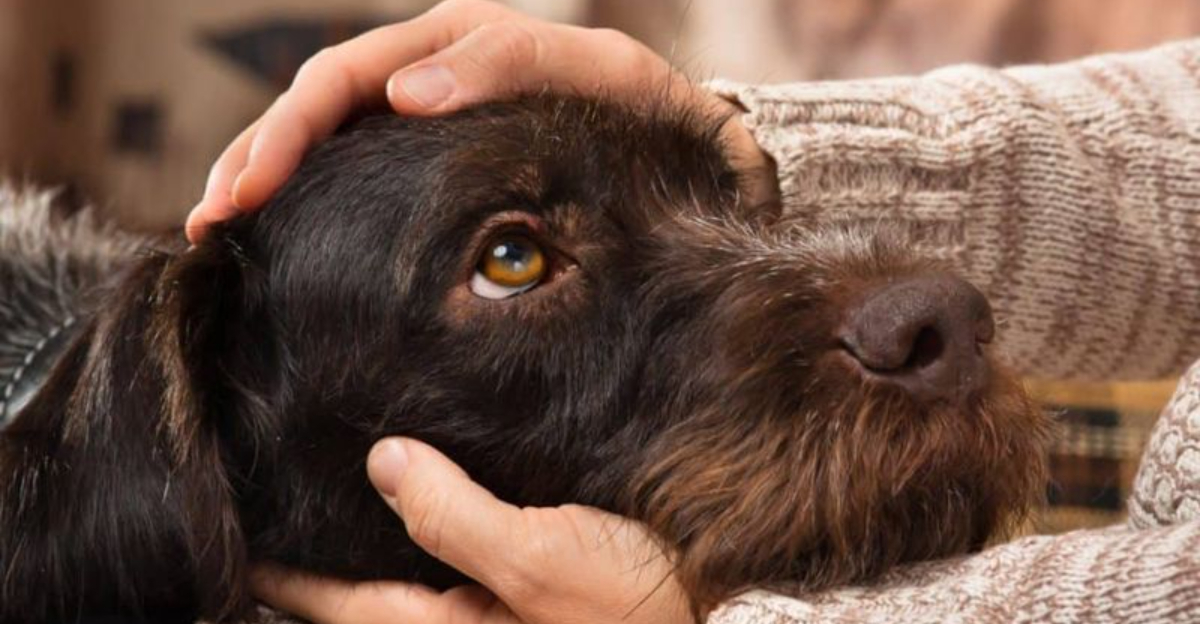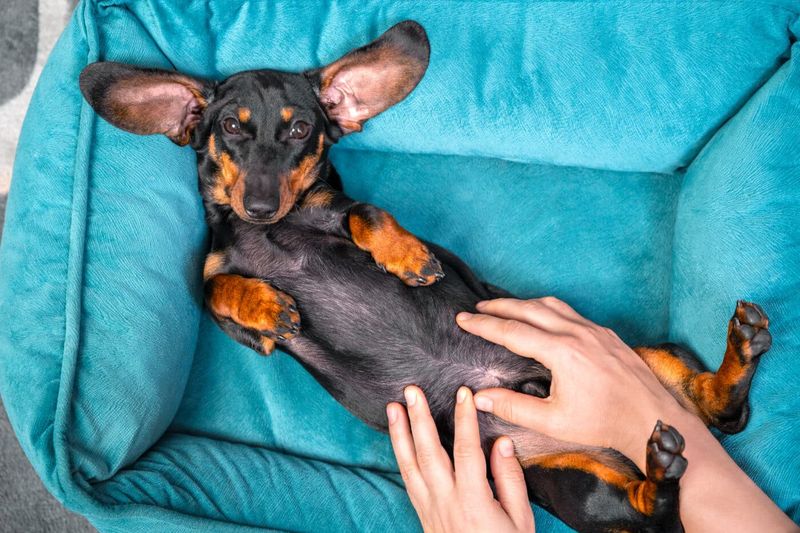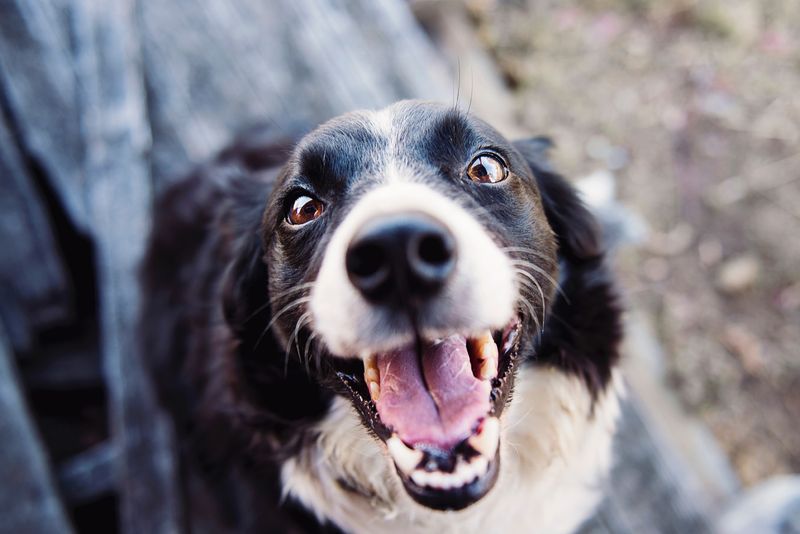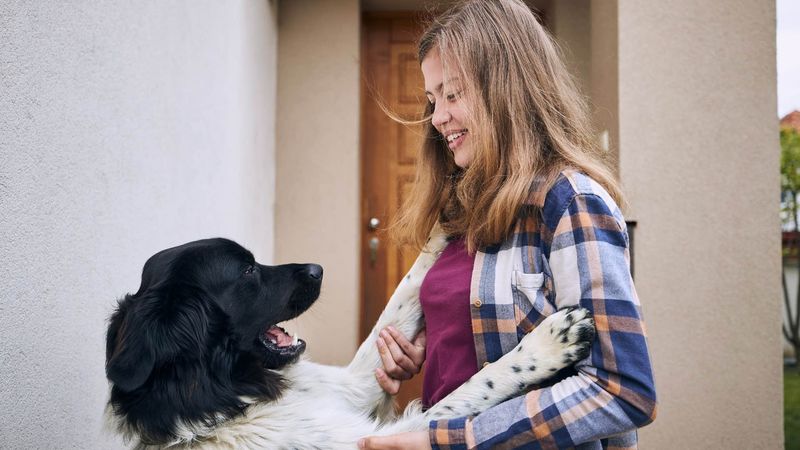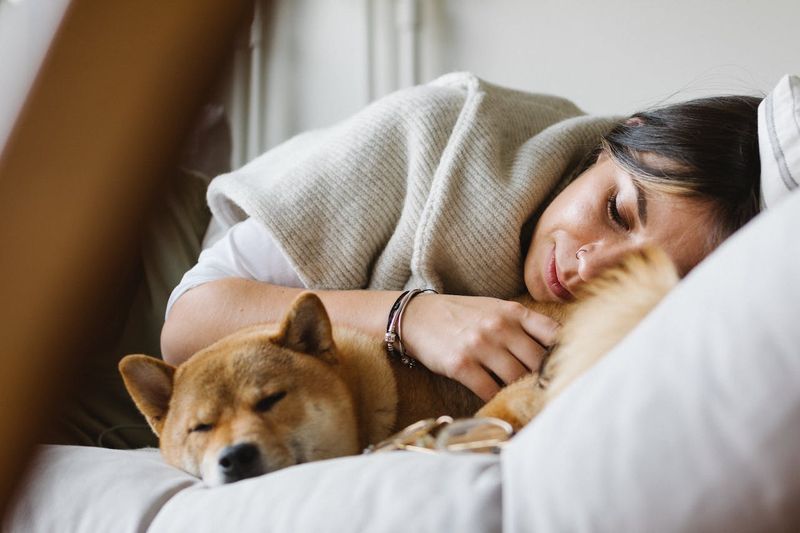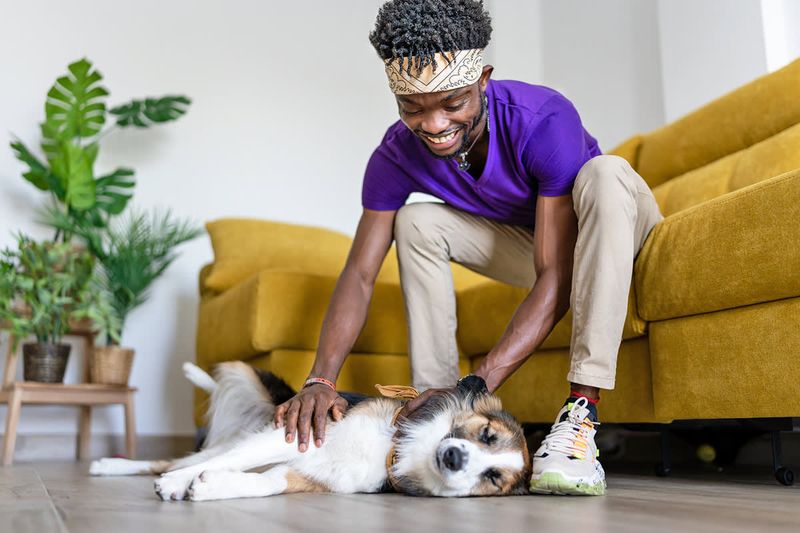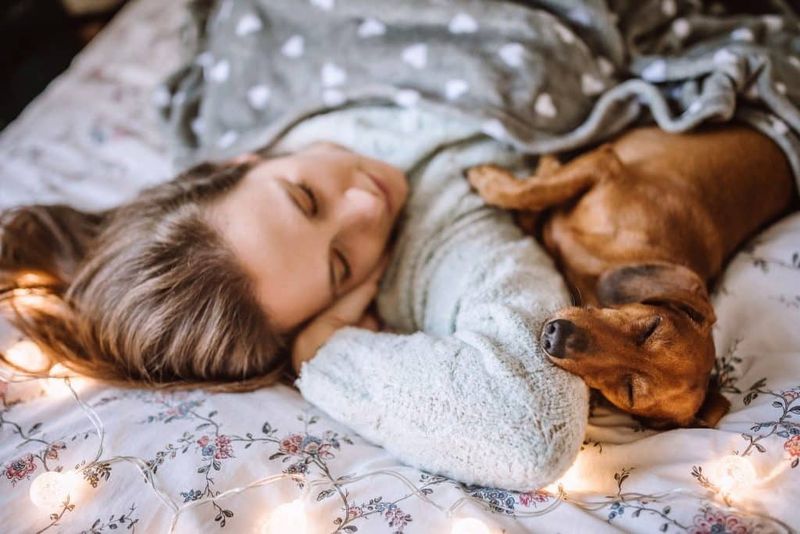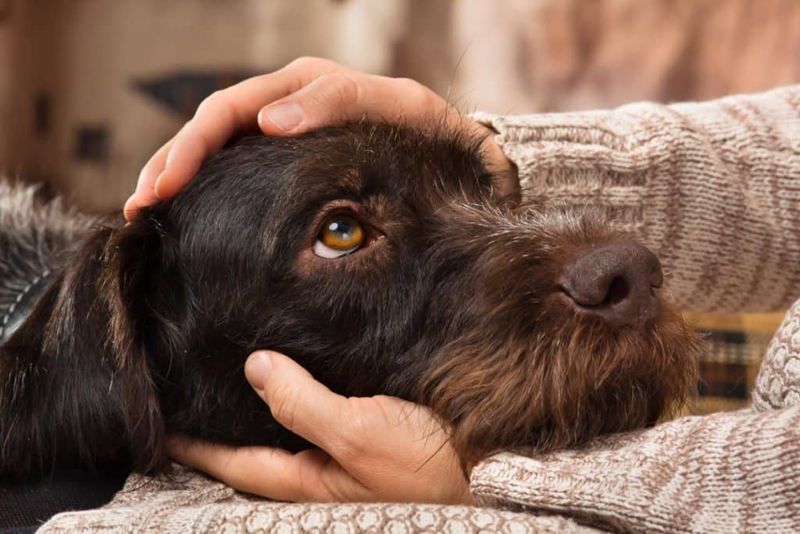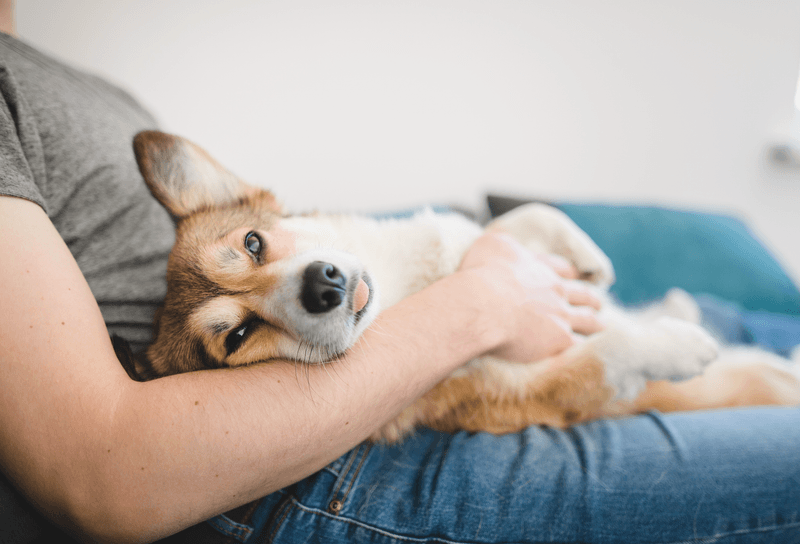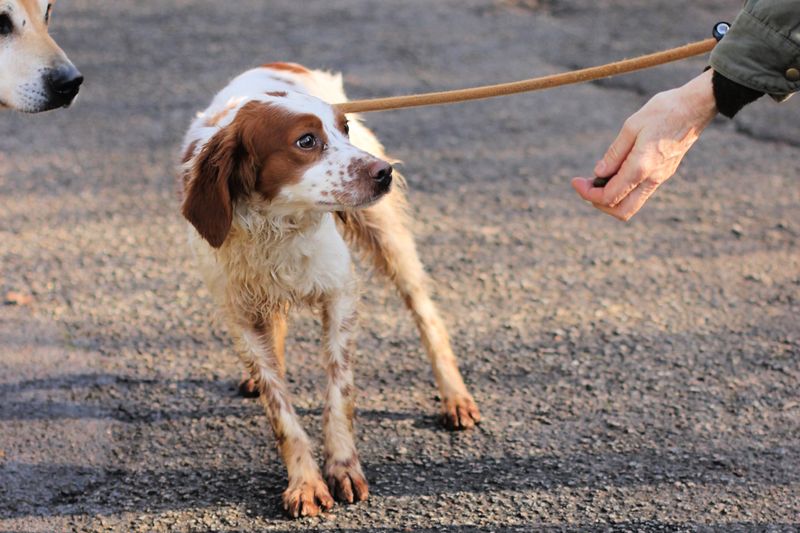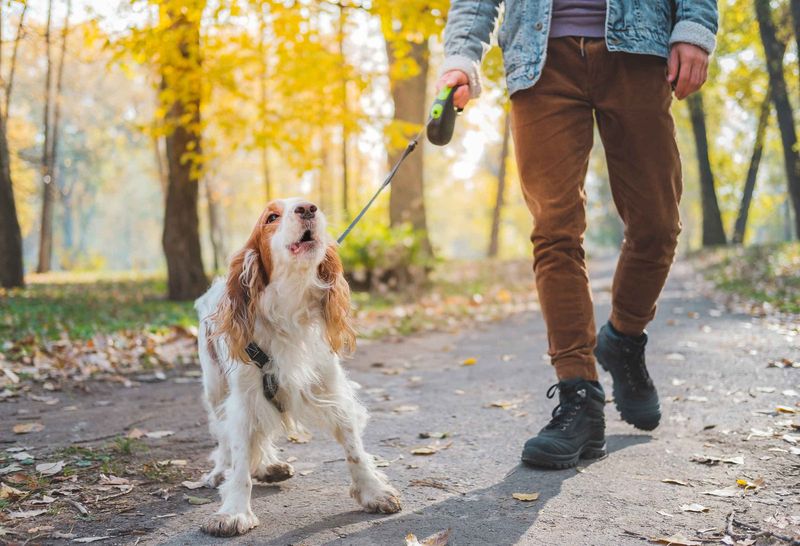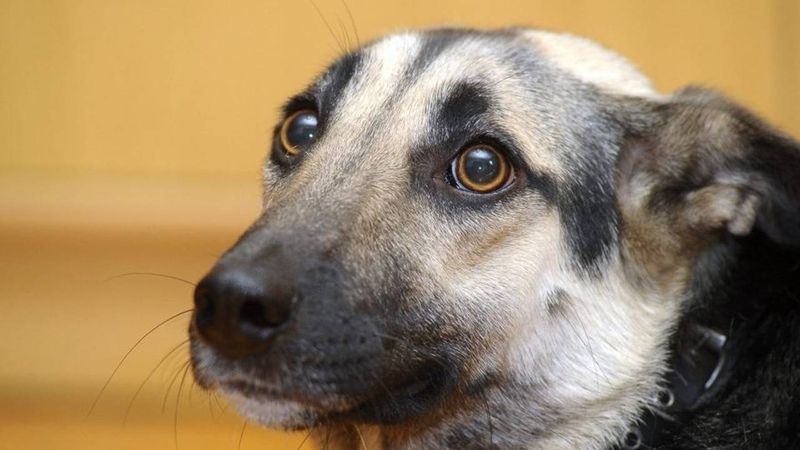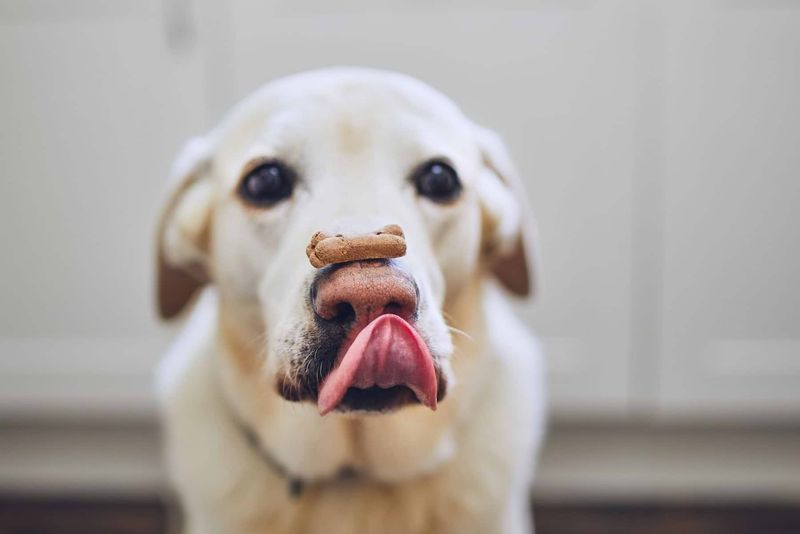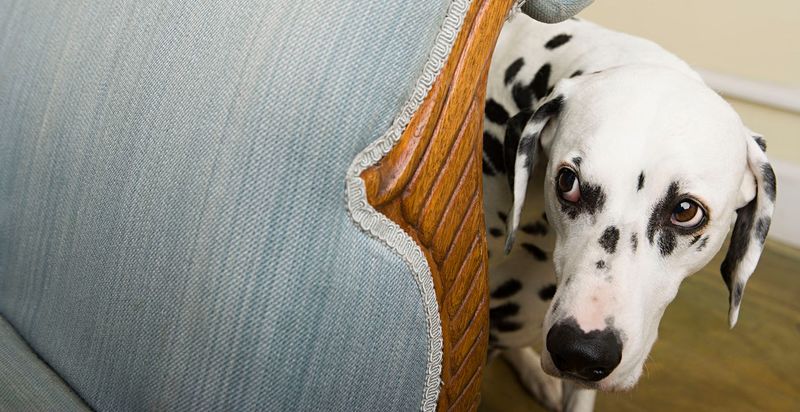Dogs communicate trust or uncertainty through various behaviors. Understanding these signals can enhance your bond with your furry friend. Here are 12 signs your dog deeply trusts you, along with 10 indicators that they are still unsure.
Relaxed Body Language
A dog that trusts its owner will often show relaxed body language. You might find your furry friend lying on its back, exposing its belly to you, which is a vulnerable position indicating trust. They might also wag their tail gently or have soft, relaxed eyes that seem to smile at you.
In contrast, a dog that’s unsure might have a tense body, with a stiff tail and wide eyes. They may avoid eye contact or keep their tail tucked.
Understanding these subtle cues will help you know your dog’s comfort level and strengthen your relationship.
Consistent Eye Contact
When a dog trusts you, they’ll often make consistent and gentle eye contact. This behavior is a sign of affection and trust, as direct eye contact is a way dogs build connections with their humans.
If your dog maintains eye contact without seeming aggressive or fearful, it means they are comfortable and trust you deeply.
On the other hand, a dog that avoids eye contact might still be assessing their feelings about you, indicating uncertainty. Eye contact is a powerful way to communicate with your dog and build a bond.
Eager to Please
Dogs that trust their owners are usually eager to please. They might learn new tricks quickly or get excited to follow commands, reflecting their desire to strengthen bonds and receive positive feedback.
This eagerness is not just about obedience but also shows your dog’s affection and trust. They see you as a leader worth following.
However, a dog that hesitates or seems indifferent might still be unsure about their relationship with you. Building trust can transform this behavior over time.
Enjoys Being Close
A dog that loves being close to you, whether snuggling on the couch or following you from room to room, is expressing trust and affection. This closeness indicates that they find comfort and safety in your presence.
Dogs that trust you will lean into you, nuzzle your hand, or rest their head in your lap.
Conversely, a dog that keeps their distance or seems aloof might not fully trust you yet. They could be wary or still evaluating their relationship with you. Patience and consistent affection can change this.
Playful Behavior
Playfulness in dogs often indicates a strong bond of trust and happiness. If your dog invites you to play by bringing toys or engaging in a friendly game of chase, it’s a sign they are comfortable around you.
Dogs express joy and excitement through play, and when they involve you, it shows a level of trust and enjoyment in your company.
Conversely, if a dog is reserved or uninterested in play, they may still be warming up to you. Encouraging playtime can help build trust and strengthen your relationship.
Happy to Sleep Near You
When a dog chooses to sleep near you, it’s a significant sign of trust. Sleep is a vulnerable state, and your dog resting by your side means they feel safe and secure.
Dogs that trust their owners often seek proximity at bedtime, curling up beside you or at your feet.
If a dog prefers to sleep away from you, they might still be uncertain about their environment or relationship. Creating a comforting and predictable routine can help alleviate this uncertainty and encourage your dog to sleep closer to you.
Shares Toys and Food
Dogs that trust you will often share their toys or bring you food, which they naturally guard. This act of sharing is a deep-rooted behavior indicating they view you as part of their pack.
When a dog brings you their favorite toy or drops food at your feet, they’re expressing a willingness to share and trust.
Conversely, a dog that guards their belongings or growls when you approach is likely still unsure. Building trust through positive interactions and showing you’re not a threat to their possessions can help shift this behavior.
Comfortable with Handling
A dog that allows you to handle them, whether for grooming, vet visits, or simply petting, shows a high level of trust. They’re comfortable with your touch and handling, knowing you mean no harm.
Dogs that trust you won’t flinch or shy away from being handled; they may even seem to enjoy it.
However, a dog that’s apprehensive about being touched might still be unsure of your intentions. Building trust through calm, gentle handling and positive reinforcement can help them become more comfortable over time.
Tail Wagging with Relaxation
Tail wagging can be a clear indicator of a dog’s feelings. A gentle, relaxed wag often signals that a dog trusts you and is happy in your presence.
This type of wag is usually slow and accompanied by a relaxed body, showing contentment and trust.
In contrast, a rapid or stiff wag might indicate nervousness or apprehension. A dog that wags its tail calmly in your company is expressing their comfort and trust. Observing these subtleties can help you gauge your dog’s emotions and the strength of your bond.
Brings You Their Favorite Toy
When a dog brings you their favorite toy, it’s a delightful gesture of trust and camaraderie. This behavior shows they want to engage with you and share what they love most.
It’s not just about play; it’s about inclusion and seeing you as part of their world.
A dog that keeps their toys to themselves or plays alone might not fully trust you yet and needs time to build that bond. Encouraging play and rewarding shared moments can help bridge the gap and foster trust.
Excited to See You
A dog that eagerly greets you with wagging tails and happy barks when you return home is a sure sign of deep trust and attachment. This excitement reflects their joy and trust in your presence.
They might jump around, lick your face, or bring you toys in their enthusiasm to see you.
If a dog doesn’t seem enthusiastic upon your arrival, they may still be unsure or not as bonded with you. Building routines and spending quality time together can enhance their excitement and deepen the trust between you.
Enjoys Cuddles and Petting
Dogs that enjoy cuddles and petting with you are demonstrating trust and affection. These moments of closeness indicate they feel safe and loved in your care.
A dog that trusts you will often seek out these interactions, lying close and inviting affection.
However, a dog that avoids touch or seems tense during petting might still be assessing their relationship with you. Encouraging gentle petting sessions and respecting their boundaries can help build trust and comfort over time.
Avoids Eye Contact
Dogs that avoid eye contact may still be uncertain about their relationships. Avoiding direct gaze can indicate discomfort or mistrust.
For dogs, eye contact can be seen as a challenge or threat, so avoiding it is a sign they’re still figuring out their feelings.
Building trust through gentle interactions, patience, and rewarding positive behavior can help your dog become more comfortable. Over time, you’ll notice more relaxed eye contact as their trust grows, allowing your relationship to deepen.
Keeps Distance
If your dog tends to keep their distance, it might mean they’re still unsure about their relationship with you. Distance can be a way for dogs to feel secure while assessing their environment.
They may sit or lie down away from you, observing from afar. This behavior indicates they need more time to build trust.
Engaging in positive, non-threatening interactions can gradually reduce this distance. Encouraging play, offering treats, and speaking softly can help your dog feel more comfortable and willing to approach, strengthening your bond.
Reluctant to Share Toys
A dog that is reluctant to share toys might still be unsure of their trust in you. Guarding behavior can indicate they feel the need to protect their possessions.
This reluctance isn’t necessarily about dominance but more about comfort levels. A dog that trusts you will be more willing to share.
Building trust through positive reinforcement and showing you’re not a threat to their belongings can transform this behavior. Encouraging shared play and respecting their space can help them feel more secure and trusting over time.
Uneasy Around New People
If your dog seems uneasy around new people, they might still be assessing their trust levels. This caution is common in dogs that are unsure about their environment and the safety of new interactions.
They may bark, keep their distance, or watch cautiously. With time and positive experiences, they can become more comfortable and trusting.
Introducing new people gradually and rewarding calm behavior can help your dog feel more secure. Over time, their confidence will grow, indicating a deeper trust in you and their surroundings.
Shows Signs of Stress
Dogs that show signs of stress, such as panting, pacing, or whining, might still be unsure or uncomfortable in their environment. Stress can be a clear indicator of uncertainty or mistrust.
Identifying the source of their stress and addressing it can help build trust. Creating a calm, predictable routine and using positive reinforcement can alleviate stress and promote comfort.
As trust develops, you’ll notice a decrease in these stress signals, with your dog becoming more relaxed and at ease in your presence, indicating a growing bond.
Resistant to Commands
A dog that is resistant to commands might still be unsure about their trust in you. This resistance can come from fear, uncertainty, or a lack of a strong bond.
A dog that trusts you will be more inclined to follow commands, as they see you as a leader.
Building trust through consistent training, patience, and positive reinforcement can help overcome this resistance. As your dog learns to trust you more, you’ll notice improved responsiveness to commands and a stronger, more trusting relationship.
Fearful of Being Touched
Dogs fearful of being touched might still be uncertain about their trust in you. This fear can stem from past negative experiences or a lack of familiarity with gentle touch.
Earning a dog’s trust involves patience and gentle handling. Gradually introducing touch, using positive reinforcement, and respecting their boundaries can help ease their fears.
As trust builds, you’ll notice your dog becoming more comfortable with being petted, indicating a growing confidence in you and a stronger bond.
Nervous Around Loud Noises
Dogs that are nervous around loud noises might still be unsure or lacking confidence in their environment. This nervousness can be a sign of insecurity or a lack of trust.
Providing comfort during these times, creating a safe space, and using positive reinforcement can help reduce their anxiety.
As your dog learns to trust their surroundings and your presence, you’ll notice a decrease in nervous behavior, indicating growing confidence and trust. Creating a calm environment can significantly strengthen your bond with your dog.
Easily Startled
Dogs that are easily startled might still be unsure or lack confidence in their surroundings. This sensitivity can indicate uncertainty or a lack of trust.
Frequent startling can be reduced through calm, positive interactions and building a routine that fosters security. Gradually exposing your dog to various stimuli in a controlled manner can help them become more accustomed.
As your dog’s trust in their environment and in you grows, they will become less reactive, showing greater confidence and a stronger bond with you.
